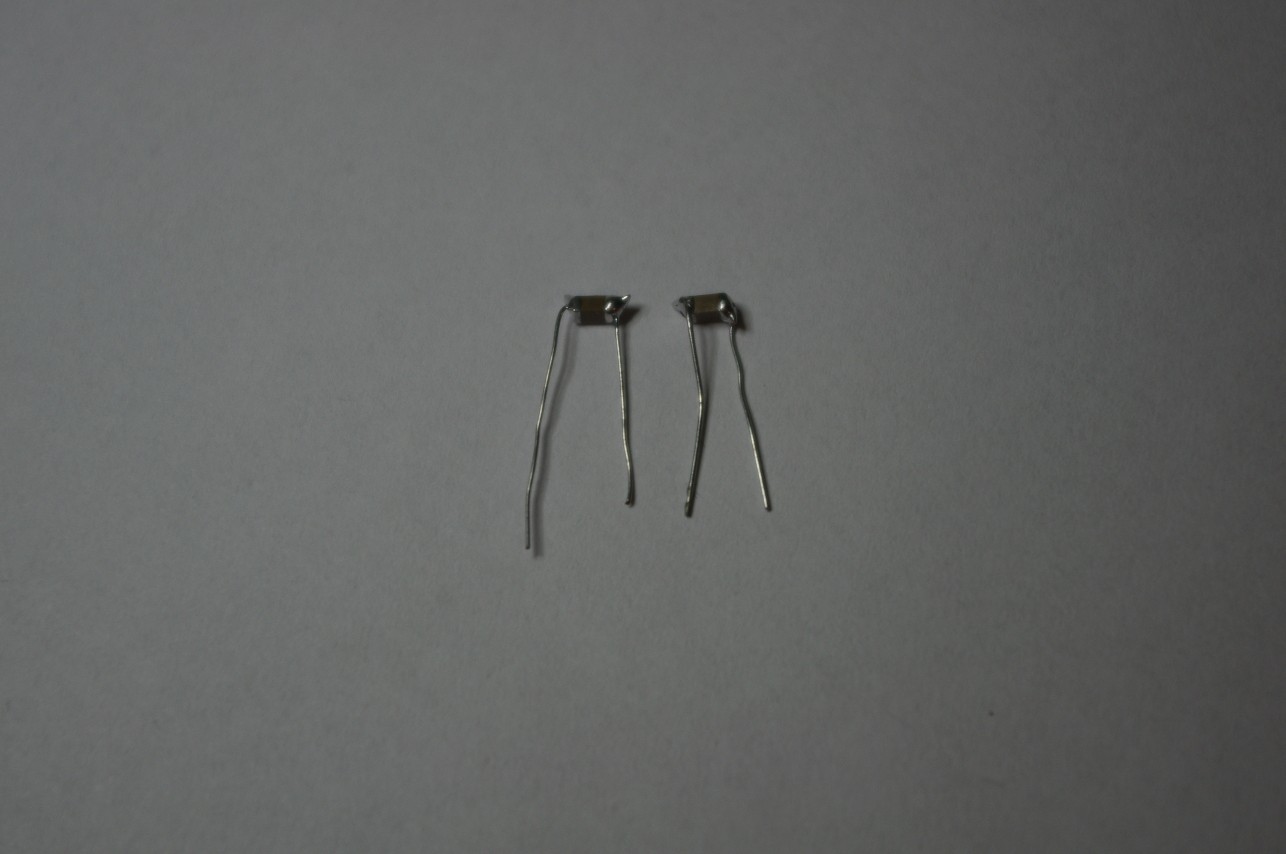One possible place of energy loss will be the capacitor array. Because of the high internal resistance of the cr2032 (tens of Ω) it's impossible to drive the LED at 500mA directly from the battery. At least a few hundred μF of capacitance will be needed to deliver the high current pulse. Electrolytics are no good because of their high leakage current (measured around 3μA with a 100μF low ESR one). MLCCs are the only option.
One of the stores I frequent has just what I need: generic 10μF 10V 1206 X7R capacitors. But what is their leakage current? I had a few of those laying around, so I quickly soldered "legs" to them and assembled a simple measuring circuit.


On the left is a 3.3V regulated supply with an additional large smoothing capacitor (100μF). Then there's a 100kΩ resistor connected from the positive rail to one side of the 2 paralleled caps (lower right). The other end of the caps is connected to ground. A multimeter in voltage mode is connected across the resistor. Initially the resistor is shorted with a juper wire to let the caps fully charge.
The measurement came up 0.0 - 0.1 mV. Clearly we're dealing with a really low current here. I swapped the resistor for a 1MΩ one and measured again. This time it measured 4mV and quickly dropped to 2-1mV. After a minute it reads < 1mV. 1mV over 1MΩ is 1nA of leakage current, co we should be able to safely stack up to a 100 of those caps without worrying about battery life.
Choice of a switching component
If I'm reading it correctly, this datasheet implies that a base current in the range of tens of mA will be required to drive a 500mA load in saturation mode. Maybe we can do better? I searched the online catalog of the previously mentioned store for a logic level, low RDS(ON) N-MOSFET. I managed to find the IRLML2502. It has RDS(ON) of around 0.05Ω at 2.5V VGS. Seems suitable. I'll get a few and test them against some generic BJTs.
 piotrb5e3
piotrb5e3
Discussions
Become a Hackaday.io Member
Create an account to leave a comment. Already have an account? Log In.